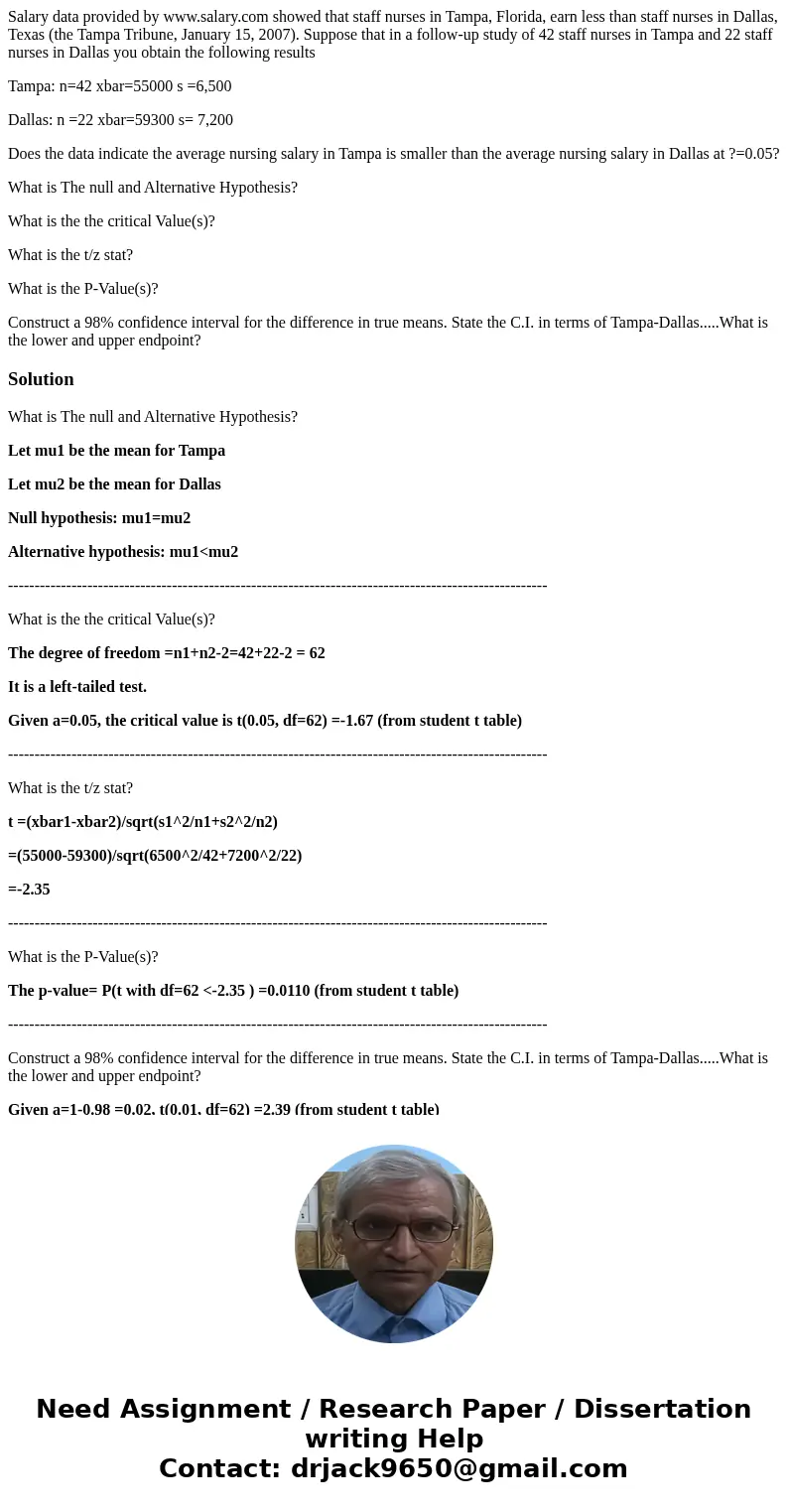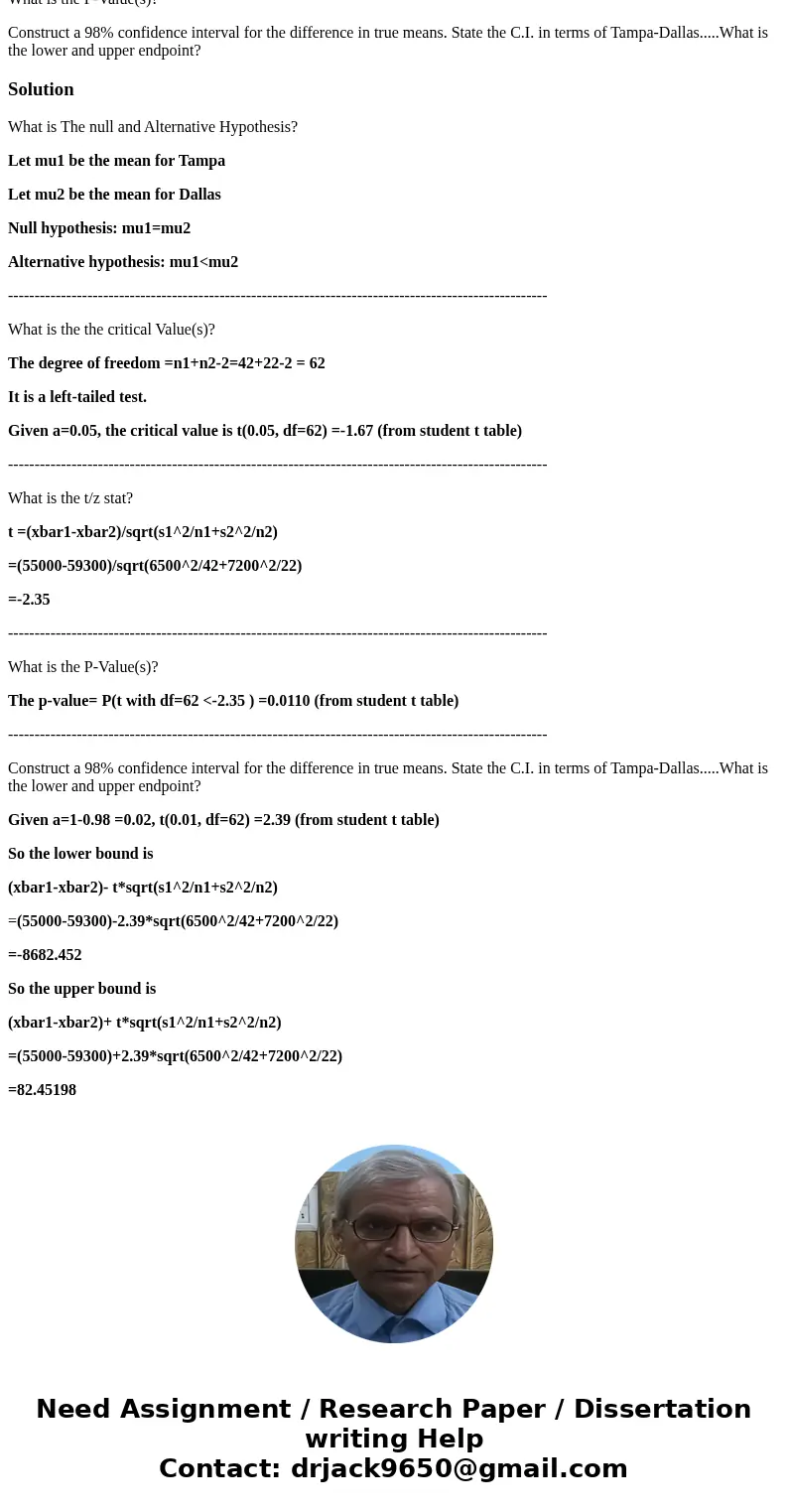Salary data provided by wwwsalarycom showed that staff nurse
Salary data provided by www.salary.com showed that staff nurses in Tampa, Florida, earn less than staff nurses in Dallas, Texas (the Tampa Tribune, January 15, 2007). Suppose that in a follow-up study of 42 staff nurses in Tampa and 22 staff nurses in Dallas you obtain the following results
Tampa: n=42 xbar=55000 s =6,500
Dallas: n =22 xbar=59300 s= 7,200
Does the data indicate the average nursing salary in Tampa is smaller than the average nursing salary in Dallas at ?=0.05?
What is The null and Alternative Hypothesis?
What is the the critical Value(s)?
What is the t/z stat?
What is the P-Value(s)?
Construct a 98% confidence interval for the difference in true means. State the C.I. in terms of Tampa-Dallas.....What is the lower and upper endpoint?
Solution
What is The null and Alternative Hypothesis?
Let mu1 be the mean for Tampa
Let mu2 be the mean for Dallas
Null hypothesis: mu1=mu2
Alternative hypothesis: mu1<mu2
------------------------------------------------------------------------------------------------------
What is the the critical Value(s)?
The degree of freedom =n1+n2-2=42+22-2 = 62
It is a left-tailed test.
Given a=0.05, the critical value is t(0.05, df=62) =-1.67 (from student t table)
------------------------------------------------------------------------------------------------------
What is the t/z stat?
t =(xbar1-xbar2)/sqrt(s1^2/n1+s2^2/n2)
=(55000-59300)/sqrt(6500^2/42+7200^2/22)
=-2.35
------------------------------------------------------------------------------------------------------
What is the P-Value(s)?
The p-value= P(t with df=62 <-2.35 ) =0.0110 (from student t table)
------------------------------------------------------------------------------------------------------
Construct a 98% confidence interval for the difference in true means. State the C.I. in terms of Tampa-Dallas.....What is the lower and upper endpoint?
Given a=1-0.98 =0.02, t(0.01, df=62) =2.39 (from student t table)
So the lower bound is
(xbar1-xbar2)- t*sqrt(s1^2/n1+s2^2/n2)
=(55000-59300)-2.39*sqrt(6500^2/42+7200^2/22)
=-8682.452
So the upper bound is
(xbar1-xbar2)+ t*sqrt(s1^2/n1+s2^2/n2)
=(55000-59300)+2.39*sqrt(6500^2/42+7200^2/22)
=82.45198


 Homework Sourse
Homework Sourse